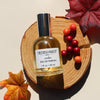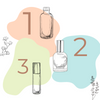Spotlight on Copaiba: The New CBD?

One of the most biodiverse areas of the world, the Amazon Rainforest is home to more than 25% of modern pharmaceuticals. Drugs used to treat malaria, glaucoma, leukemia, and many other diseases have been discovered in the rich plant kingdom beneath the Amazon canopy.
Among the thousands of plant species you’ll find in the Amazon, one of the world’s most promising (yet not new) medicinal plants is the Copaiba tree. Although there are more than 70 species of Copaiba distributed throughout the world, their widespread occurence- and the center of their medicinal harvesting- is located in the thick rainforests of Brazil and Columbia. The towering Copaiba tree can grow to a height of 120 feet with a diameter of 12 feet. They are meticulously slow growing; the oldest trees are estimated to be 400 years old.

Harvesting Copaiba
Although the tree produces beautiful white blossoms and a small nut-like fruit, Copaiba’s medicinal crop is its oleoresin, oozing from channels winding inside the tree’s massive greyish trunk. Indigenous people still harvest the oleoresin as they have done for centuries. They place a small tube through the thick bark of the tree to tap the resin, similar to the process of harvesting maple syrup. This system of sustainably tapping and harvesting can last a number of years, preserving the tree’s life and highlighting the symbiotic relationship between humans and trees that has existed for millennia.

The oleoresin is a thick gooey oil of pale gold. Its appealing musky vanilla-honey aroma has been used in the perfume industry for some time.

Origins
Copaiba oleoresin is considered one of the most important natural remedies in the Amazon region. Indigenous communities started using the resin after observing animals rub their wounds on the trunks of Copaiba trees. They too discovered that the resin helped reduce pain and inflammation, and protected against skin infections.
Reports from European settlers to the Americas in the 16th century record observations of indigenous tribes applying Copaiba oil in the navel of newborns and the wounds of warriors after battles.
Copaiba and the Endocannabinoid System
Copaiba has been shown in clinical studies to have a remarkable number of benefits due to its high concentration of beta-caryophyllene (BCP), which binds to cannabinoid receptors in the endocannabinoid system (ECS), a complex system of molecules and receptor sites that influences healthy function of the body’s major organs.
Experts are still trying to fully understand how the ECS works, but they do know it plays a role in regulating and balancing a wide range of functions and processes in the central and peripheral nervous systems, including appetite and digestion, chronic pain, inflammation and immune system responses, mood, learning and memory, motor control, reproductive system function, stress, and skin and nerve function.
The ECS system is comprised of:
- Endocannabinoids- molecules produced in the human body to keep the internal functions running smoothly.
- Endocannabinoid receptors- sites throughout the body where endocannabinoids bind to signal the ECS needs to take action. There are two types of receptors: CB1, found in the central nervous system, and CB2, found in the peripheral nervous system. "Endocannabinoids might target CB1 receptors in a spinal nerve to relieve pain. Others might bind to CB2 receptors in your immune cells to signal that your body is experiencing inflammation, a common sign of autoimmune disorders," according to Healthline.
- Enzymes- responsible for breaking down endocannabinoids once they have carried out their function.
CBD, THC, and Copaiba
CBD and THC are two types of cannabinoids found in cannabis. THC is the psychoactive substance that makes you feel "high." THC binds to receptors just like your body’s own endocannabinoids and can have positive effects, such as stimulating appetite and reducing pain. However, the psychoactive characteristics make it less desirable as a treatment to some.
CBD, also found in cannabis, doesn’t bind to CB1 or CB2 receptors like THC. Some experts believe it either prevents endocannabinoids from being broken down, or it binds to a receptor that hasn’t been discovered yet. However, research does show that CBD can help with pain, nausea, and other symptoms with very few side effects.
Copaiba contains high amounts of beta-caryophyllene, which has been found to bind selectively to CB2 receptors in the body, triggering an immune system response that prevents inflammation. Better yet, Copaiba is gentle with no known negative side effects.
Copaiba’s Health Benefits when Applied Topically
Copaiba is not only effective in working with the endocannabinoid system to address chronic pain conditions. It also has several other chemical components that make an effective topical treatment for various skin problems, especially for those with sensitive skin.
Apply Copaiba topically to treat:
- Chronic pain- Copaiba oil has been found to be effective in treating chronic pain and inflammation from rheumatoid arthritis and osteoarthritis. Apply to aching muscles and joints for pain relief.
- Acne and blemishes- Copaiba is effective in treating acne breakouts and skin lesions.
- Scarring- Copaiba stimulates the process of tissue repair and improves the appearance of scars.
- Irritated skin- helps to naturally heal redness, inflammation, psoriasis, and eczema
Need some Copaiba in your life? Check out our Copaiba Massage Oil Rollerball, and our Sol Face Elixir.
-
Posted in
amazon, copaiba, ingredients









